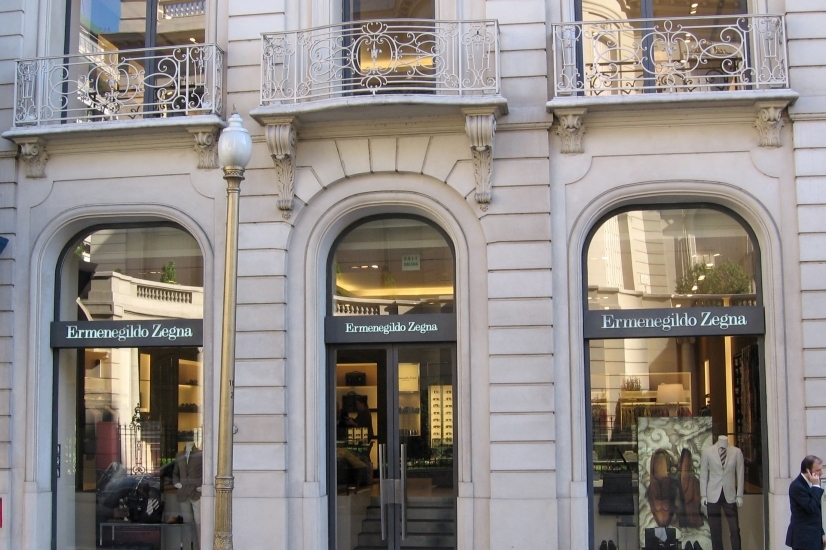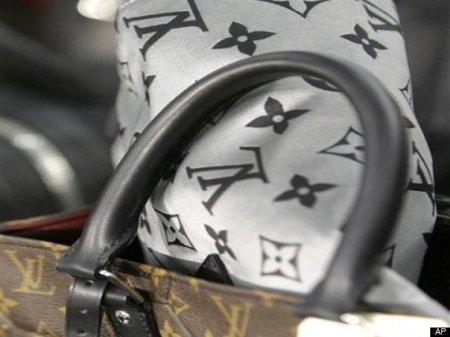
Luxury Society presents eight key trends that helped to define the luxury industry in 2012…
Luxury Society presents eight key trends that helped to define the luxury industry in 2012…
India added a local sourcing clause to FDI, making it difficult for luxury brands to enter the local market. China overtook the United States as the world’s biggest consumer nation of luxury goods. Luxury goods brands led a mass exodus from Argentinian retail.
European luxury brands were snapped up by wealthy investors in Asia and the Middle East. Fast running out of brands to acquire, luxury conglomerates intensified acquisition of suppliers.
Luxury fashion houses made a serious foray into fine jewellery and timepiece categories. Luxury conglomerates went to court for counterfeit, copyright and everything in between. And continued to look for heritage brands of the past to bring them growth in the future.

Challenges Remain in India
In November 2011, we reported that India’s union cabinet had agreed to allow 51% foreign direct investment (FDI) in multi-brand and 100% FDI in mono-brand retail. Meaning that luxury brands, for the first time in the country’s history, were able to open their own directly controlled stores, without the aid of a local distributor.
Bowing to political pressure, the government amended this ruling in April 2012, when a local sourcing clause was added. In respect of proposals involving FDI beyond 51%, this meant mandatory sourcing of at least 30% of the value of products sold, from Indian small industries, artisans & craftsmen. Which in many cases halted the further development of an Indian retail network for luxury brands.
Further Reading: Challenges Remain for Luxury Brands in India

China, It’s Official
In December 2012 Bain & Co. reported that Chinese consumers have overtaken U.S. shoppers to become the world’s biggest buyers of luxury goods. The Chinese now account for 25% of global sales through purchases at home and overseas according to the consultancy firm, as U.S. consumers account for one-fifth of the world’s luxury sales.
China’s domestic luxury sales, estimated to be worth 106 billion yuan ($17 billion) in 2011, are expected to grow 7% this year – a marked slowdown from 30% growth in 2011. In 2012 it also became clear that more and more Mainland Chinese tourists are shopping in cities like London, New York and Paris, where they can save as much as 40% on luxury goods because of the weaker euro and on differences in tax or duties.
Further Reading: Attracting and Serving China’s Global Luxury Consumer

European Brands Find New Homes
In the past decade a flurry of French, English and Italian luxury brands have ceded control to foreign investors, some due to hangovers from 2008’s global financial crisis, others in a bid to expand and better conquer so-called ‘emerging’ markets.
Britain’s Aquascutum was recently acquired by China’s YGM, Italy’s Cerruti is now controlled by China’s Trinity Limited, Germany’s Escada is owned by India’s Mittal family and France’s Sonia Rykiel forms a part of Hong Kong based Fung Brands. Bedat, Gieves & Hawkes, ST Dupont, Ferretti Group and Pringle of Scotland form further examples of European brands picked up by foreign owners.
Most recently, Kazakh billionaire Goga Ashkenazi purchased the remaining shares of Vionnet from Matteo Marzotto, to become the sole owner of the heritage brand.
Further Reading: Emerging Wealth Fuels Foreign Acquisition of European Luxury Brands

Exit from Argentina
Weary of high tariffs and currency restrictions that have dented their profits in Argentina, purveyors of luxury goods abandoned this once lucrative market, according to AFP. Brands such as Ralph Lauren, Louis Vuitton, Escada and Calvin Klein shuttered doors on their local boutiques, as Ermenegildo Zegna was forced to close one of its retail locations for two months because it could not import stock.
Giorgio Armani, Hermès and Cartier are three more significant luxury brands rumoured to be shuttering local operations, as the government ramps up import barriers and imposes tough currency controls tightening measures to protect foreign exchange reserves.
Further Reading: A Quick Look at Luxury in the BRICs

Fashioned Fine Jewellery
‘Hard luxury’ became a bit of a buzzword in 2012, as stellar jewellery and timepiece performance suggested a shift from seasonal accessories to investment in longer term luxury goods. Louis Vuitton cemented its commitment to fine jewellery with the opening of its dedicated jewellery boutique and atelier, on the prominent corner site of Place Vendôme.
“All of this suggests the jewellery sector is getting the full heat of the luxury industry’s fast growth incubator,” explained Maria Doulton. “And with reason, the Richemont Group reported that in 2012 their jewellery maisons represented 52% of sales by area against 26% for watches. Between Cartier and Van Cleef & Arpels sales grew from €3,479 million in 2011 to €4,590 million in 2012, representing an increase in 32% for jewellery sales similar to the 31% for watches.”
“If we look at how the luxury conglomerates turned around the watch industry ten years ago, it appears that the same fervour is being focused on, the until now largely unbranded and under exploited, jewellery industry.”
Further Reading: Innovation & Creativity Suggest a Bright Future for Branded High Jewellery

Luxury Loves a Lawsuit
Hermès International SCA won a judgment against 34 websites that sold fake copies of its luxury goods and was awarded approximately $100 million in damages. LVMH was less lucky when the French high court partly overturned rulings against eBay from 2008, when LVMH accused the online marketplace of breaching distribution networks and selling counterfeit goods. eBay was originally ordered to pay €38 million in fines, an amount reduced to €5 million in 2012.
Richemont went up against a Russian organisation, which was producing mid-priced clothes under the locally registered trademarks “Vacheron Constantin” and “Jaeger Lecoultre”.
12 sitting justices unanimously agreed that a well-known trademark in another country may not be co-opted and applied to different goods in the local country because it is confusing to the consumer and unfairly trades on reputation. They also ordered that the local trademarks be cancelled.
Further Reading: Luxury Conglomerates Have Their Day in Court

M&A; Goes Vertical
The industrialisation of the luxury industry has resulted in a record amount of M&A; deals in the past decade. Where the initial focus was developing a portfolio of strong individual brands – bringing us conglomerates as we know them today – the focus is shifting towards the acquisition of suppliers and craftsman, in a bid to protect competitive advantage in the future.
In 2012 alone, Chanel acquired cashmere producer – and longtime supplier – Barrie knitwear. Italian textile leaders Ermenegildo Zegna, Marzotto and Loro Piana purchased a controlling stake in Pettinature Di Verro, a combing mill specialised in fine wool, cashmere and special fabrics needed for suiting.
La Montre Hermès acquired dial manufacturer Natéber SA, more recently Richemont took control of VVSA, a high-end manufacturer of stamped exterior components for watches. LVMH managed to acquire two watch dial manufacturers – Léman Cadran and ArteCad SA – as well as French artisan shoemaker Delos Bottier & Cie and haute couture manufacturer Arnys.
Further Reading: Luxury M&A; Goes Vertical

The Heritage Revival
The current economic slowdown, combined with densely crowded prestige markets, has led many entrepreneurs to consider reanimating an old brand rather than creating a new one," explains James Lawson. “By reviving an old brand, entrepreneurs will benefit from its existing brand recognition and equity, usually defined as a combination of positive visual, verbal and emotional associations.”
A classic example is Faberge whose brand was long used for fragrances and cosmetics and only recently saw the original production of jewelled eggs restored. Similarly, LVMH acquired Moynat, a luxury leather luggage house that was founded 150 years ago but whose brand had been dormant for the past three decades. This year Tod’s resuscitated Maison Schiapparelli, a fashion brand that had been dormant since 1954.
Further Reading: Luxury Conglomerates Look to Heritage Revival
To further investigate the overall luxury industry on Luxury Society, we invite your to explore the related materials as follows:
– 2012’s Best Global Luxury Brands
– 2012 Luxury Industry Predictions from the Experts
– A Year of Change: The Luxury Industry in 2011










